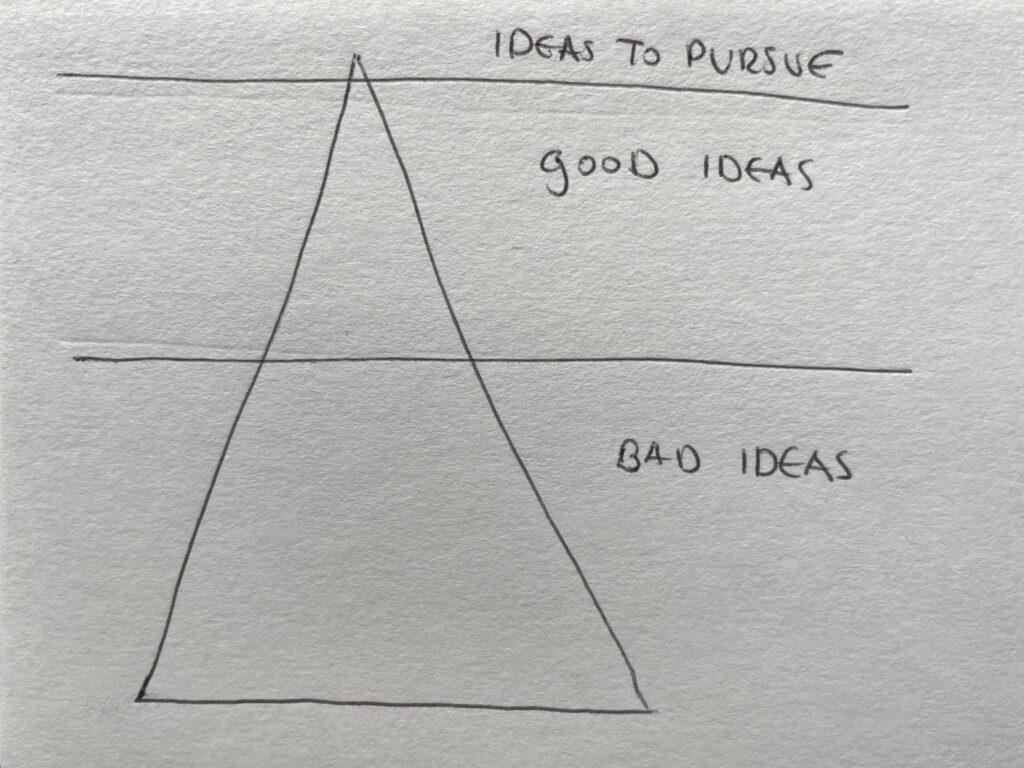
7 Questions to Determine if You’re onto Something Big
After decades of working with entrepreneurs, product executives, and creating a few of my own products (a few modestly successful and many absolute duds), I’ve developed a short checklist for whether an idea is worth the significant time and effort to develop into a product. Far too often these questions are left unanswered and the founding team plows forward continuing to build (hell, I’ve done that myself) but the questions don’t go away just because you’ve build around them. They get more problematic. The earlier they’re answered, the easier the next steps are.
0. Why do we care if its a Good Idea?
- Our time here is finite, so we need to prioritize;
- Solving meaningful problems is fun.
- Helping more people is better than fewer.
- Making money is fun.
- What frustration are we eliminating, and for whom?
State it in a one-sentence MadLib, e.g.
“It’s for [hyper-specific customer segment] frustrated by [an acute, persistent problem]. “
As the adage states, “if it ain’t broke – don’t fix it.”
If we’re going to have any measure of success, we need to identify an it that’s broke. It can be very difficult for anyone – even those directly experiencing the problem to fully, clearly, and accurately, articulate the broke it – they can more easily articulate their frustrations, demonstrate when these frustrations occur, and describe the outcome they’re struggling to achieve. It’s that frustration we want to articulate in a single sentence.
Consider this an initial hypothesis. Personally, in early stages of idea development, I like to have 3 of these sentences – each with a distinct potential customer. This helps to ensure you’re casting a wide-enough net an thinking creatively about all the ways your idea can help people
2. Why will the number of people with this frustration exponentially grow over the next 3 years?
There are a number of trends flowing right now – some mega, others not. Knowing which emerging trends amplify the idea will suggest how big and how fast the customer base will grow.
Exponential growth over the next 3-5 years is needed to support a growing and maturing company. If the frustrated customer base isn’t predicted to grow in scale, the idea can’t support a company. Then, we should act like the frustration has already been solved, and move on to what comes next.
3. Are we (the founding team) currently experts in this frustration?
Signs of our expertise include;
- We have this frustration currently and have already tried multiple ways to eliminate it – including spending money, and we’re currently using this solution.
- 20 other people/organizations have told us they have this frustration currently and they’ve tried multiple ways to eliminate it – including spending money.
- We know 10 different ways to eliminate this frustration and all the (non-obvious) reasons they don’t actually work.
- We can make a logical argument on why more exponentially people will have this frustration in 5 years.
- We could give a TED Talk, start a YouTube channel, etc on this frustration.
- We can identify the precedent (the player, in any market, validating our highest risk)
4. What’s our unique insight that everyone else has missed?
Here we’re looking for the characteristic that sets us and our solution apart from the other available solutions.
Some examples:
- We’ve eliminated something everyone thinks is mandatory (this is my personal favorite)
- We have exclusive access to a technology, material, process, expertise, or customer segment
5. Can we demonstrate the idea right now?
I don’t care how rudimentary the demonstration is, I want to see the frustration solved leveraging our unique insight. This demonstration means the idea is real, tangible, and usable – verses simply theoretical.
6. What does this look like at >$10K/transaction?
All businesses have a price floor below which it’s not worth the time and effort to pay the invoice. In my experience, that floor is $10,000/transaction. Founding teams either don’t think about price early or price far too low ($<10). Imagining how the idea could support a >$10K price tag is helpful when trying to imaging all the different customers the idea could help at scale. Yes, B2B customers enthusiastically paying >$10K are all that matter as they’re the fastest way to profitability.
7. Where’s the opportunity for network effects & zero marginal costs?
Two of the biggest costs a young company has are; the costs to get the next customer (customer acquisition costs) and the cost of producing the next item (marginal costs). Finding ways to leverage network effects – where the value of the product increases as more customers use it – is one way to structurally counter those headwinds and position the product for zero marginal costs. This also compliments the earlier question about exponential growth in the customer base.
Grab the Keynote of this blog post